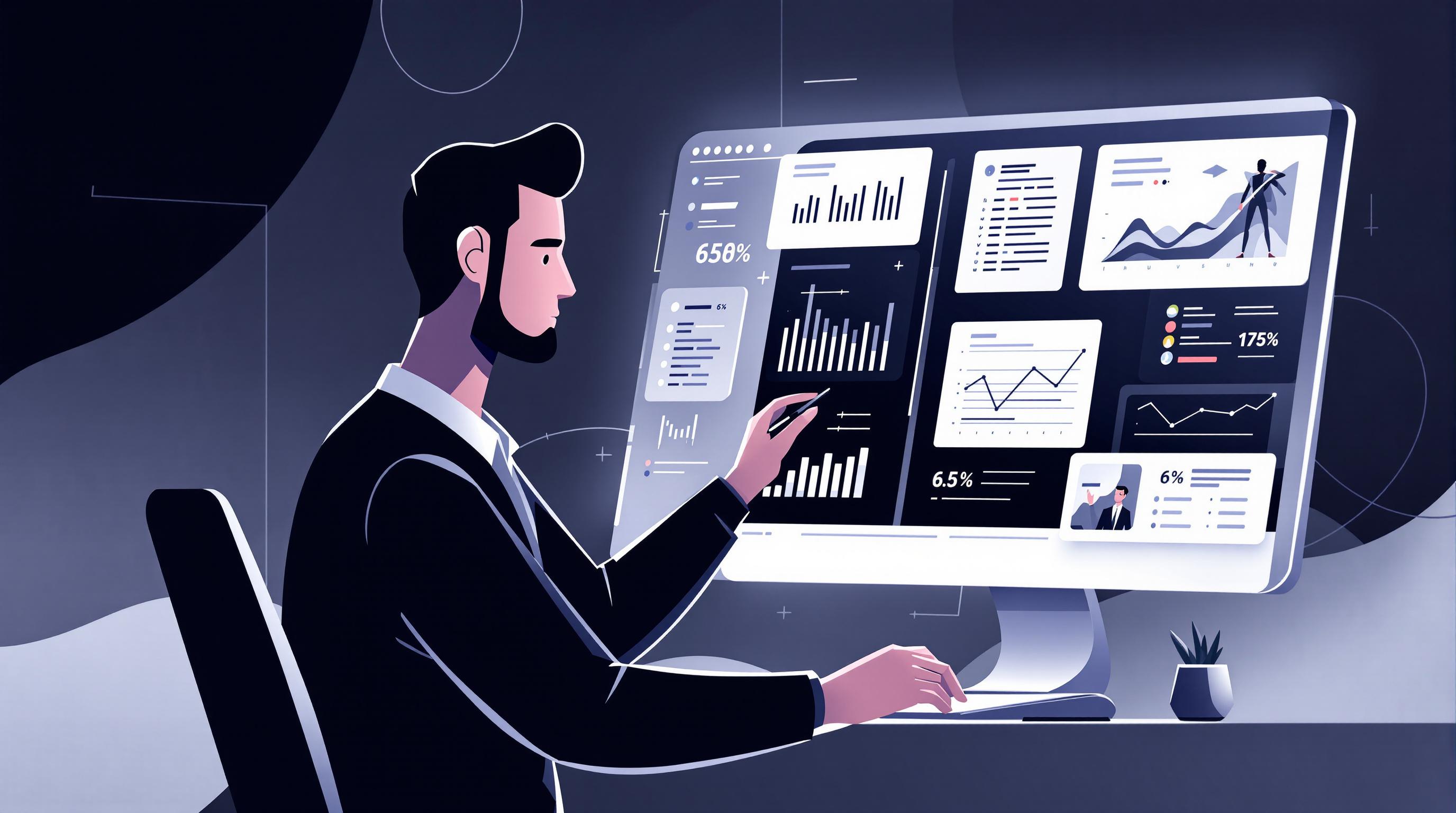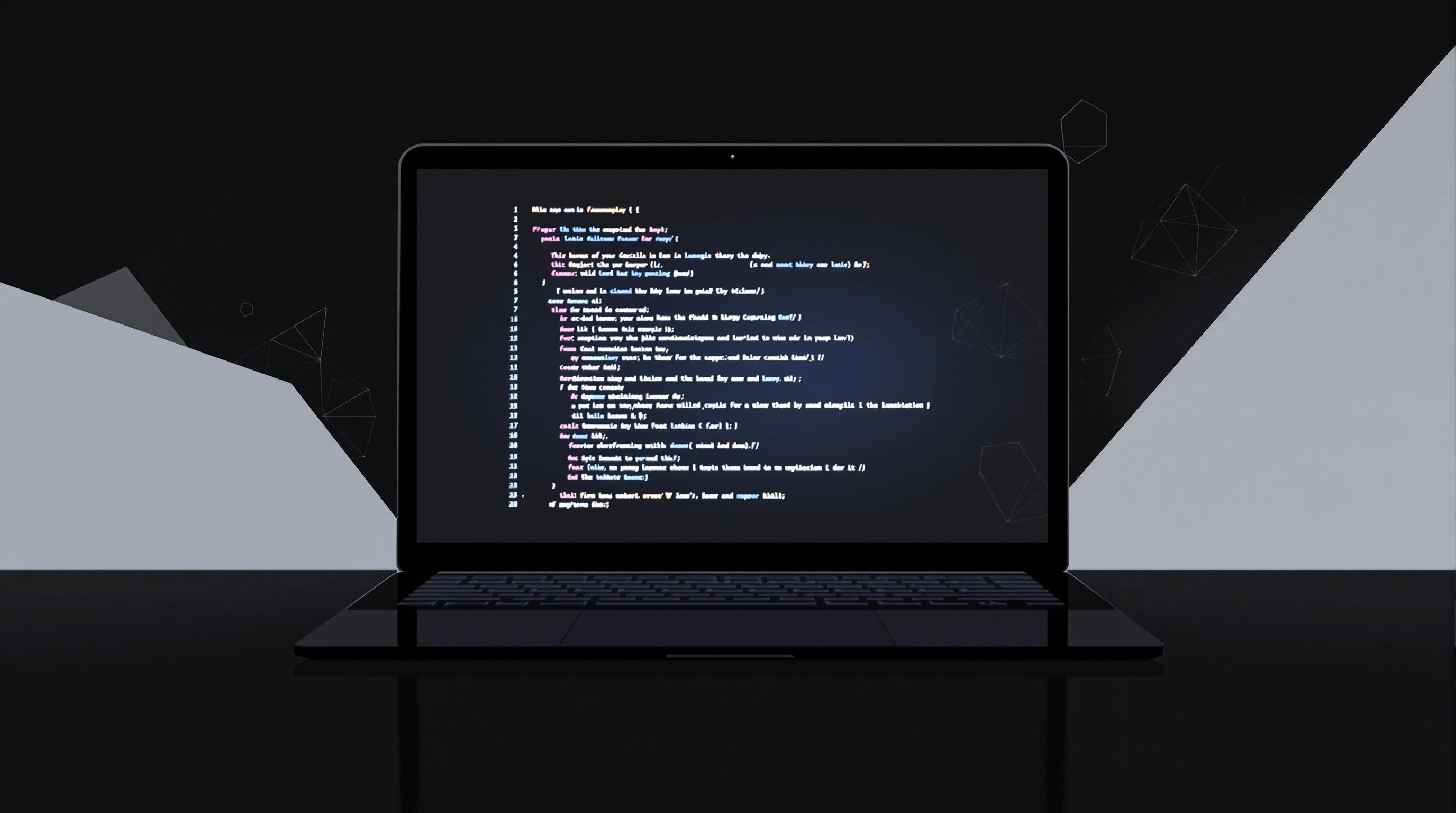AI and Big Data are reshaping web scraping by making it smarter, faster, and capable of handling massive datasets. Here's what you need to know:
- AI improves efficiency: Machine learning helps scrapers adapt to website changes, extract accurate data, and bypass anti-scraping defenses like CAPTCHAs.
- Big Data scales operations: Distributed computing and cloud platforms process huge amounts of data in real time, enabling businesses to analyze trends, track competitors, and monitor social sentiment.
- Real-world applications: E-commerce pricing, social media analysis, and news aggregation are just a few examples where this synergy delivers actionable insights.
Together, AI and Big Data make web scraping more powerful while addressing challenges like dynamic websites, ethical concerns, and legal compliance. This combination is transforming industries by providing reliable, scalable, and timely data solutions.
AI Technologies in Web Scraping
Machine Learning for Scraping
Machine learning has transformed web scraping by enabling tools to learn and improve with every session. Using techniques like decision trees and neural networks, these algorithms can detect patterns in website structures, making it easier to adapt to changes automatically. Plus, they scale effortlessly with Big Data systems, handling massive datasets with ease.
What makes ML-powered scrapers stand out is their ability to pinpoint relevant data with high precision. They minimize errors that often occur with older scraping methods and excel at navigating complex layouts and dynamic content.
NLP for Data Analysis
Natural Language Processing (NLP) takes web scraping to the next level by making sense of unstructured text. With NLP, scrapers can extract insights, identify topics, analyze sentiment, and even categorize information. These capabilities are particularly useful for tasks like sentiment analysis, as mentioned earlier in Section 4.
AI Anti-Blocking Methods
Websites today are equipped with advanced anti-scraping defenses, making it harder for traditional scrapers to operate. AI-powered anti-blocking tools tackle this issue with smart technologies like proxy management and CAPTCHA-solving systems.
Here’s how they work:
- Mimicking Human Behavior: AI replicates natural browsing habits to avoid detection.
- Dynamic Proxy Rotation: Manages IP addresses intelligently based on website activity.
- Adapting to New Defenses: Machine learning models quickly recognize and adjust to updated anti-scraping measures.
These techniques make large-scale data collection possible, especially for applications like market analysis. By integrating seamlessly with Big Data systems, these AI tools enable ethical, efficient web scraping for businesses and researchers alike.
Big Data Infrastructure for Web Scraping
Distributed Computing for Scraping
Distributed computing is the backbone of large-scale web scraping. Tools like Apache Spark make it possible to process data across multiple nodes at the same time. This approach breaks down complex scraping tasks into smaller parts, allowing them to run in parallel.
By processing thousands of web pages at once, distributed systems drastically cut down the time required for data extraction and analysis. This parallel processing ensures efficiency even for massive scraping projects.
Cloud-Based Scraping
Cloud platforms have revolutionized web scraping by offering scalable and flexible solutions without the need for hefty upfront investments. Services from providers like AWS and Google Cloud operate on pay-as-you-go models, making large-scale scraping more accessible and cost-efficient.
Key features offered by cloud providers include:
- Scalable storage (e.g., Amazon Redshift) for handling large datasets
- Elastic compute resources to match processing demands
- Load balancers for distributing traffic efficiently
These components provide the infrastructure needed to support the real-time processing demands outlined in the next section.
Real-Time Data Processing
The real power of web scraping lies in being able to process and analyze data as it’s collected. Tools like Apache Kafka and Apache Flink help create pipelines for real-time data processing, enabling applications like market sentiment tracking or financial analysis.
To ensure smooth operations, organizations often use auto-scaling systems that adjust resources automatically. Machine learning models are also integrated to predict resource needs and validate data during processing. By combining distributed computing, cloud services, and real-time capabilities, businesses can handle web scraping at an enormous scale while staying efficient and cost-conscious.
AI and Big Data Web Scraping Uses
E-Commerce Price and Market Analysis
E-commerce companies rely on AI-driven web scraping to keep tabs on prices and analyze the market. These tools pull data from competitor websites, offering up-to-date insights that help shape business strategies.
With AI, scraped data is processed to spot pricing trends, inventory changes, and shifts in the market. Machine learning models take it a step further by predicting future pricing behaviors.
Take Amazon, for example. Their advanced systems track millions of product listings across various platforms. They analyze competitor prices, stock levels, and customer behavior patterns to fine-tune pricing strategies in real time. This approach reflects the distributed computing infrastructure discussed in Section 3, showcasing how vast amounts of data are processed efficiently.
These pricing insights also play a role in shaping customer-focused strategies, such as analyzing social media sentiment.
Social Media Sentiment Analysis
By applying natural language processing (NLP), AI systems can analyze massive amounts of social media content to gauge brand perception and customer satisfaction.
These systems handle a variety of data types, including:
- Text posts and comments: Extracting opinions and feedback.
- Engagement metrics: Measuring likes, shares, and comments.
- Hashtag trends: Tracking popular topics.
- Interaction patterns: Understanding how users engage with content.
What makes this approach so effective is its ability to handle huge datasets while picking up on subtle emotional cues in customer feedback, providing a deeper understanding of public sentiment.
Content and News Aggregation
AI-powered tools are also used to gather and process content from thousands of websites in real-time. These systems specialize in tasks like:
- Categorizing articles by topic: Making information easier to navigate.
- Extracting key data from unstructured text: Pulling out the most important details.
- Monitoring industry-specific news: Keeping businesses informed about relevant updates.
This real-time capability ensures businesses stay ahead by accessing and analyzing the latest information as it becomes available.
sbb-itb-f2fbbd7
Challenges and Trends in AI Web Scraping
Ethical and Legal Issues
The legal rules around AI-powered web scraping are shifting, with businesses needing to balance data privacy laws like GDPR and CCPA while respecting website terms of service. Cases like HiQ Labs v. LinkedIn and Meta v. Bright Data have shown that scraping publicly available data is often allowed, but questions around privacy and copyright remain. High-profile disputes, including GitHub's Copilot case and Stability AI's conflict with Getty Images, show how tricky it can be to innovate while staying within ethical and legal boundaries.
At the same time, websites are stepping up their defenses against automated scraping, making it harder for companies to extract data effectively.
Website Anti-Scraping Measures
Modern anti-scraping tools use advanced techniques to detect and block bots. These methods analyze traffic patterns, browser fingerprints, and IP activity, forcing scrapers to constantly refine their methods. Companies like ZenRows offer APIs designed to navigate these obstacles while sticking to ethical practices.
To tackle these barriers, AI scraping tools are focusing on smarter strategies that ensure both effectiveness and compliance.
Future AI Web Scraping Developments
AI combined with IoT is reshaping how data is collected. Self-learning scraping systems are emerging, capable of adjusting to website changes on their own, processing live data, and working with dynamic, complex sites - all while staying aligned with changing regulations. These tools aim to improve real-time processing and ensure better data quality checks.
"As legal frameworks around web scraping evolve, uncertainty remains about future regulations", notes a leading industry expert.
Organizations will need to anonymize data, secure permissions, and provide opt-out options to ensure compliance. As legal and technical challenges increase, the industry is responding with smarter AI systems built to balance efficiency and regulatory demands.
Industrial-scale Web Scraping with AI & Proxy Networks
AI and Big Data in Web Scraping
AI and Big Data are transforming web scraping in groundbreaking ways. Grand View Research estimates the global web scraping market could hit $1.3 billion by 2025, driven by AI's capabilities and the scalability of Big Data.
AI-powered scraping has proven to increase efficiency by 40% while reducing costs by 30%. It also improves data accuracy by over 50%, ensuring the data collected is reliable for making informed decisions.
Real-world applications highlight these advancements. For instance, Advantage Solutions' Canopy brand uses AI to gather eCommerce data, while Mathison leverages it to refine hiring processes. These examples underline how AI and Big Data aren't just theoretical - they’re delivering tangible results.
"As web scraping teams navigate emerging landscapes, it is essential to maintain a balance between leveraging advanced technologies and ensuring ethical, transparent practices." - Dexodata
Innovations like MIT's self-teaching AI scrapers are pushing the boundaries even further. These scrapers adapt to dynamic websites and validate their findings using confidence scores. Combined with the decreasing cost of cloud services, such advancements make sophisticated scraping tools accessible to businesses of all sizes.
Looking ahead, web scraping will need to tackle complex, ever-changing websites while adhering to stricter regulations. By addressing anti-scraping measures and prioritizing ethical practices, businesses can ensure compliance and build trust. Those who adopt these technologies responsibly will gain a competitive edge in the data-driven landscape.


